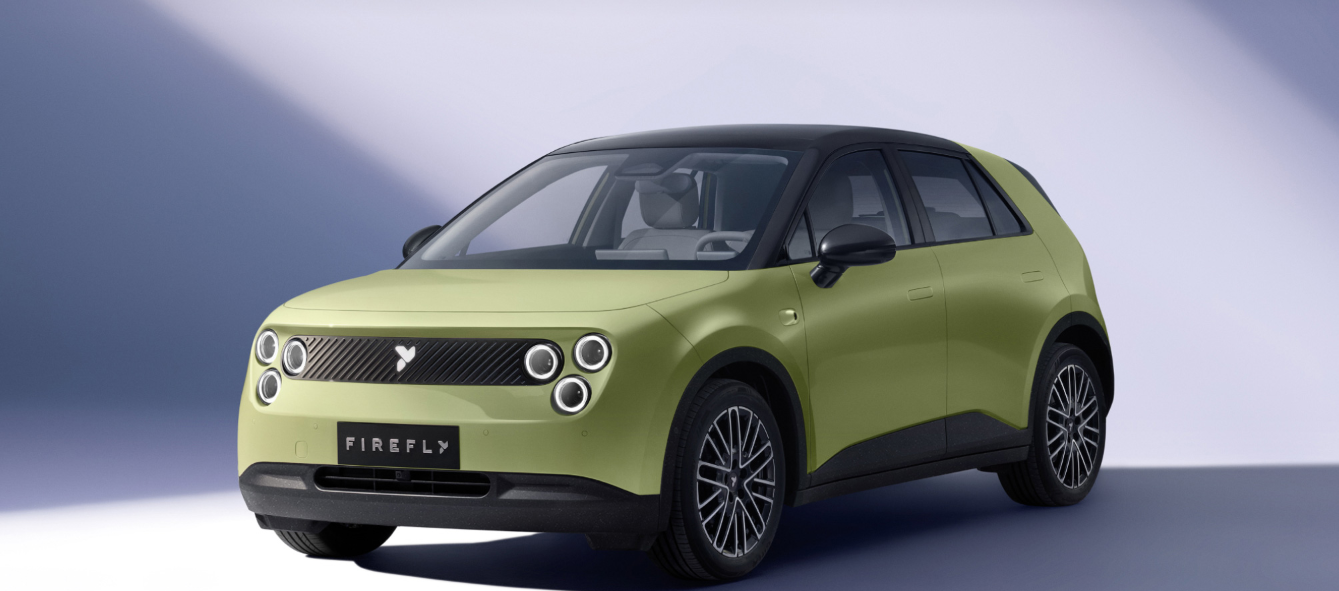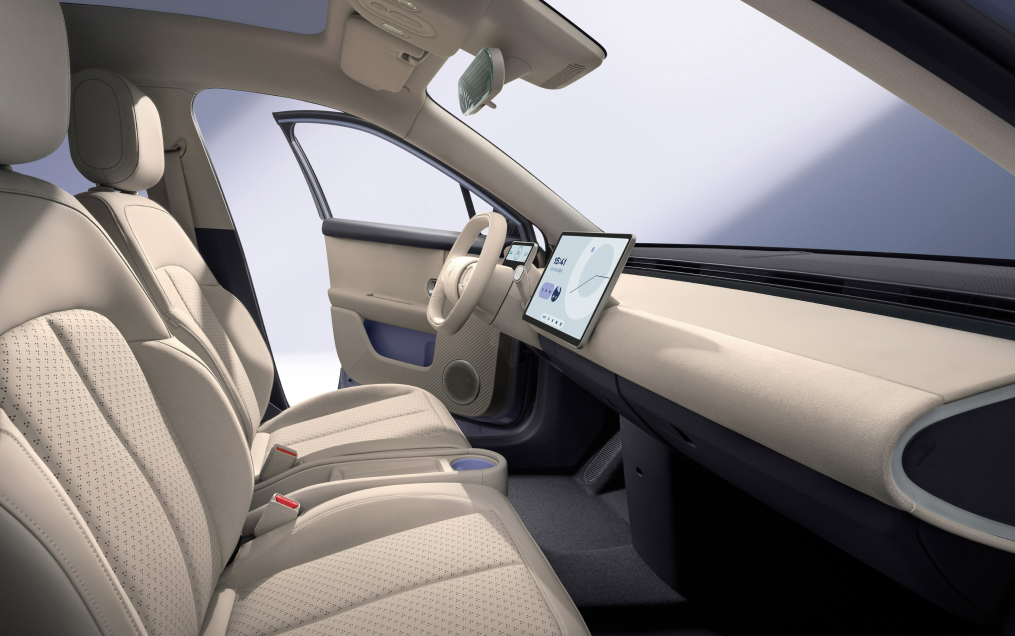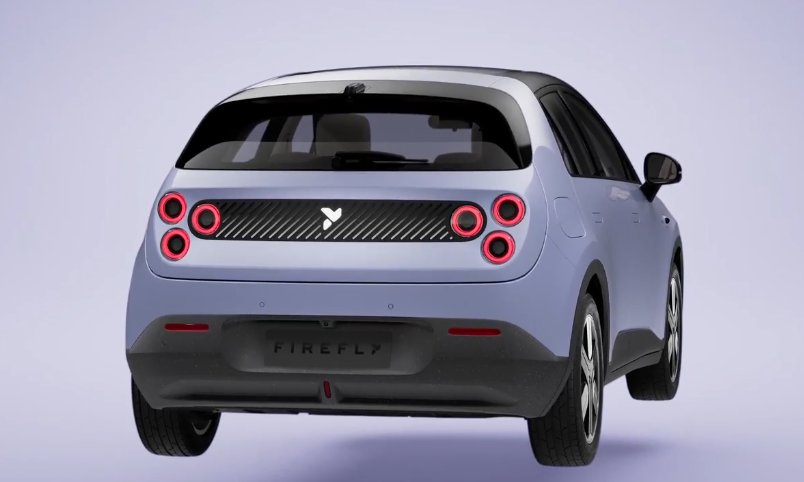Nio’s $21k Firefly EV: Premium Punch in a Pint-Sized Package (Mini Cooper Beware?)
- Firefly will hold an all-day event for its first model on April 19, with the official product launch starting at 8 pm Beijing time.
- The model went on pre-sales in China last December for RMB 148,800 yuan ($20,390).
Nio, the Chinese EV innovator known for its premium SUVs, sedans, and groundbreaking battery-swapping tech, just threw a curveball. After recently unveiling the ultra-luxurious, $110,000+ ET9 sedan – a technological tour de force aimed squarely at the high-end market – they’re now pivoting to the complete opposite end of the spectrum. Meet Firefly, Nio’s brand-new sub-brand, and its first offering, simply called the Firefly.
Presented by Ethan Robertson of Wheelsboy, this isn’t just another budget EV. Nio is positioning the Firefly as a premium compact hatchback, a Mini Cooper-sized electric warrior with serious European ambitions, all wrapped up in a package with a pre-sale price (in China, as tested) hovering around an astonishing $20,600 USD.
Can Nio pull off affordable premium? Let’s dive in.
Design: Insectoid Charm Meets European Aspirations
The Firefly certainly doesn’t look like a typical budget box. Its most striking features are the lights – clusters of three circular lamps front and rear. It’s distinctive and memorable.

The overall design blends round and square shapes effectively, creating pleasing proportions for a small car. While visually compact, it’s actually slightly longer and taller than a classic 2-door Mini Cooper, putting it closer in size to the 4-door Mini Aceman. This size, combined with its unique styling, sets it up to compete directly with established European favorites like the Mini Electric and the upcoming Renault 5 E-Tech. Firefly had to create its identity from scratch, unlike Mini which leans heavily on iconic heritage, and the result is surprisingly characterful.
Stepping Inside: Premium Touches on a Budget?
Here’s where the “premium” claim gets interesting. In the context of the hyper-competitive Chinese market, where similarly sized EVs often cost 30-50% less, the Firefly’s interior feels decidedly upscale. Soft-touch materials abound – on the dash, door panels (upper and lower), armrests, and even the steering wheel. This is a significant step up from the hard plastics often found in its cheaper domestic rivals.
The tech interface looks sharp:
Center Screen: A crisp 13.2-inch display with 2.5K resolution
Instrument Cluster: A compact, but clear, 6-inch digital display behind the wheel
UI/UX: The user interface is thoughtfully designed, carrying over a “pill shape” motif seen elsewhere in the cabin for a cohesive feel. Clever two-finger gesture controls allow quick adjustments for temperature (left side, up/down), fan speed (left side, left/right), and volume (right side, up/down
Audio: A standard 14-speaker, 7.1 Dolby Atmos sound system – out-spec’ing many competitors, including the optional Harman Kardon in the Mini.
Ambiance: Subtle, high-end feeling ambient lighting and even a built-in fragrance system add to the premium aspirations.

While impressive compared to budget Chinese EVs, the real test will be how this interior stacks up against the established fit, finish, and material quality of its European targets like Mini.
Surprisingly Practical: Storage Champion
For a small car, the Firefly packs a surprising amount of practicality:
Rear Cargo: A very usable 335 liters with the rear seats up, expanding to a generous 1250 liters when folded nearly flat. This beats both the Mini Aceman and Renault 5 E-Tech.
Frunk: A massive 92-liter front trunk – a rarity in this class, especially for rear-motor vehicles. Bonus: it even includes a drain plug, turning it into a potential cooler for picnics or tailgating!
Clever Cubbies: The interior features numerous storage solutions, including under-armrest space, a unique magnetized pull-out drawer under the center console, and (on the ‘Select’ trim) storage bins under the flip-up front passenger seat base and rear seat bases (27L). The lack of a traditional transmission tunnel also allows for easy pass-through between the driver and passenger sides.

Under the Skin: The Driving Bits
The Firefly rides on a platform featuring McPherson struts up front and a sophisticated 5-link independent suspension in the rear – again, often reserved for more expensive vehicles.
Powertrain: Rear-wheel drive, powered by a single rear motor producing 105 kW (around 140 hp).
Performance: 0-100 km/h (0-62 mph) takes a respectable 8.2 seconds, matching the entry-level Mini Electric. Top speed is limited to 150 km/h (93 mph).
Battery & Range: It uses a 42.1 kWh LFP (Lithium Iron Phosphate) battery pack, delivering a claimed 420 km (261 miles) on the optimistic CLTC cycle. Expect a more realistic WLTP range closer to 330 km (around 205 miles). Energy efficiency is rated at a decent 10.9 kWh/100km (CLTC).
Handling: The steering is well-weighted and direct, and the ride is tuned more for comfort than the go-kart feel of a Mini. Thanks to its RWD setup, it boasts a tight 4.7-meter turning radius, making it nimble in the city.
Safety & Tech: The Chinese version gets 9 airbags, while the global version is expected to have 7. It features 10 cameras and 12 ultrasonic sensors, enabling planned features like Highway Navigate-on-Autopilot (NOA).
Battery Swapping & BaaS: Crucially, the Firefly will support Nio’s signature battery swapping, although likely only at the upcoming 5th-generation stations. This also opens the door for Nio’s Battery-as-a-Service (BaaS) model, allowing buyers to rent the battery monthly, significantly lowering the initial purchase price.
The Big Question: Can Firefly Ignite the Market?
The Firefly presents a fascinating proposition and a potential headache for established players. Esspecially with it’s 30k launch price. This suggests Chinese buyers might not prioritize premium badges on tiny cars when compelling, cheaper domestic alternatives exist (like the Geely Geome E8/Xingyuan, which sells nearly 30,000 units a month).
The real battleground, however, seems to be Europe. Firefly aims for “European domination.” While the feature set, practicality, and potential BaaS pricing could make it highly competitive, it faces the hurdle of brand recognition against deeply entrenched European marques. Buyers willing to spend a little extra for a premium small car might still gravitate towards familiar names like Mini or Renault.
Final Thoughts
The Nio Firefly is more than just a budget EV. It’s a well-equipped, cleverly designed, and surprisingly practical small hatchback with a premium feel that belies its potential price point, especially if the BaaS model significantly lowers the entry cost in Europe. It boasts features and interior quality often missing in cars twice its price (in China).
However, Nio and its fledgling Firefly brand face a steep climb. Convincing Chinese buyers to choose it over cheaper, established domestic best-sellers will be tough. And conquering Europe means overcoming brand loyalty and proving its premium credentials against the likes of Mini on their home turf.
Will the Firefly spark a revolution in the affordable premium EV segment, or will it struggle to find its niche? Only time will tell, but Nio is certainly playing an interesting game.
